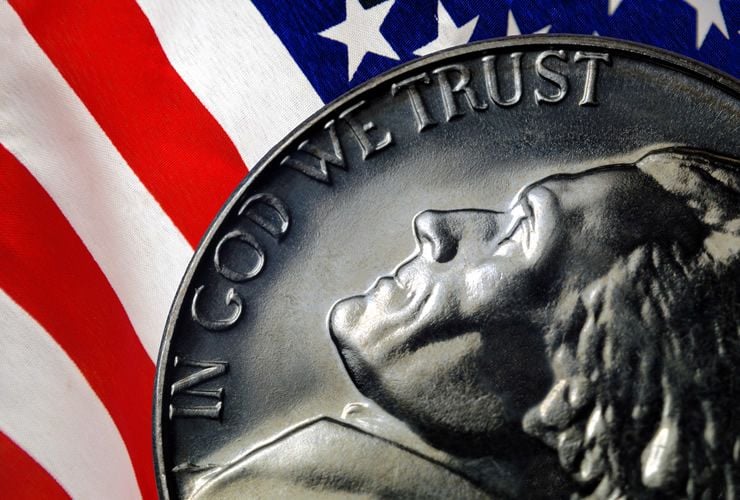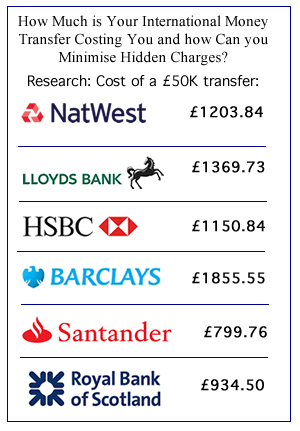US Dollar Strength: Fed-Speak Reaches a Crescendo Today

Exchange rates are likely to take direction ahead of the weekend from the words of US Federal Reserve Chair Janet Yellen who delivers a much-anticipated speech at 18:00 G.M.T.
With the US Dollar having enjoyed a stellar week of trade there is a risk that any disappointments from Yellen with regards to the pace of interest rate rises through the course of 2017 and 2018 will trigger fresh selling pressures.
But its not just Yellen who gets a say today as we have Federal Reserve Bank of Chicago President Charles Evans speaking at 15:15, followed by US Fed board member Jerome Powell at 17:15.
Following Yellen at 18:00 is Vice Chair of the Federal Reserve Stanley Fischer.
“Fed-speak rises to a crescendo today, before the blackout ahead of the March 15 FOMC meeting,” says Adam Cole, Chief Currency Strategist with RBC Capital Markets in London. “The default position is that rates rise on March 15 and the onus is on the data or news-flow stopping that happening.”
The US Federal Reserve are going to raise interest rates in March - at least this is the conclusion reached on market pricing for such an event.
Money markets are assigning a 90% probability of such an event; and when markets are so set on a particular outcome the Fed has little choice but to comply.
"Recent Fed speakers have made the March meeting more than ‘live’, in fact fed funds futures indicate that a March rate hike has become the market’s base case in only a few days, with the implied probability now at 90%. Now we’ll have to wait for Yellen to see if she puts out the fire or joins the chorus," says Philip Marey, Senior US Strategist at Rabobank.
This week, in his first speech to Congress, President Donald Trump did not provide any details on tax cuts or other
policy plans, but struck a conciliatory tone that reassured markets.
However, the focus shifted quickly to monetary policy after NY Fed president Bill Dudley stated that the case for tightening had become “a lot more compelling” as risks to the economic outlook have started tilting to the upside.
These hawkish comments, together with recent statements by other regional Fed presidents, have clearly increased the risk of a move in March.
The net result of these growing expectations is a stronger US Dollar which has outperformed its rivals this week:
- The US Dollar index is at 102.05 having started the week at 101.07
- The Pound to Dollar exchange rate is quoted at 1.2259 having started the week at 1.2554
- The Euro to Dollar exchange rate is quoted at 1.0516 having started the week at 1.0584
- The Australian to US Dollar exchange rate is quoted at 0.7554 having started the week at 0.7712.
If the Fed were to avoid raising interest rates then their credibility would be undermined and the reaction of markets - a hefty sell-off in the US Dollar being likely - would arguably be destabilising.
“While the probability of a March move seems more likely to rise toward 100% than to fall, further upside for USD on rate expectations is probably limited from current levels,” says RBC Capital’s Cole.
We would agree and say that the Dollar is at risk of profit-taking from its recent run and any guidance from Fed members of a slower pace of rate rises beyond March could trigger selling.
"Markets are now well on the way to pricing in the three Fed rate hikes we expect for this year but investors may reasonably start to ponder whether earlier means more in terms of Fed tightening over the balance of the year as the Trump administration continues to ponder its fiscal stimulus plans," says Shaun Osborne, an analyst with Scotiabank.
Why is the Fed Keen on Raising Rates All of a Sudden?
There has been a tangible shift in the Fed’s appetite for introducing higher interest rates between the January/February meeting and this week.
The shift comes without any major change in the economic data, suggests that something else is going on in the FOMC.
What are the possible explanations? Rabobank's Marey offers some explanations on the matter which has a bearing on how today might play out on markets:
1) Perhaps once they realized that it could take longer to get clarity on fiscal policy plans, they decided that fiscal policy is going to provide a stimulus to the economy in any case (basically Dudley’s approach in his CNN interview: if not already incorporated in the baseline forecast, it is at least a risk to the upside), so why not hike now?
2) Or perhaps the FOMC wants to grab the opportunity to hike, now that the economy is on a steady course and euphoria has desensitized the markets to a rate hike. Waiting for the stars to converge has slowed down the Fed in the last two years with only a single rate hike out of the four they promised each year.
3) There is the possibility that this is not a coordinated effort by the Fed. Since the shift took place shortly after Yellen’s speech, we may be witnessing a breakdown in Yellen’s control of the FOMC. Perhaps the FOMC participants are reacting in the same manner that soccer players react when they learn that the term of their coach is coming to an end: they don’t take the coach seriously anymore.





